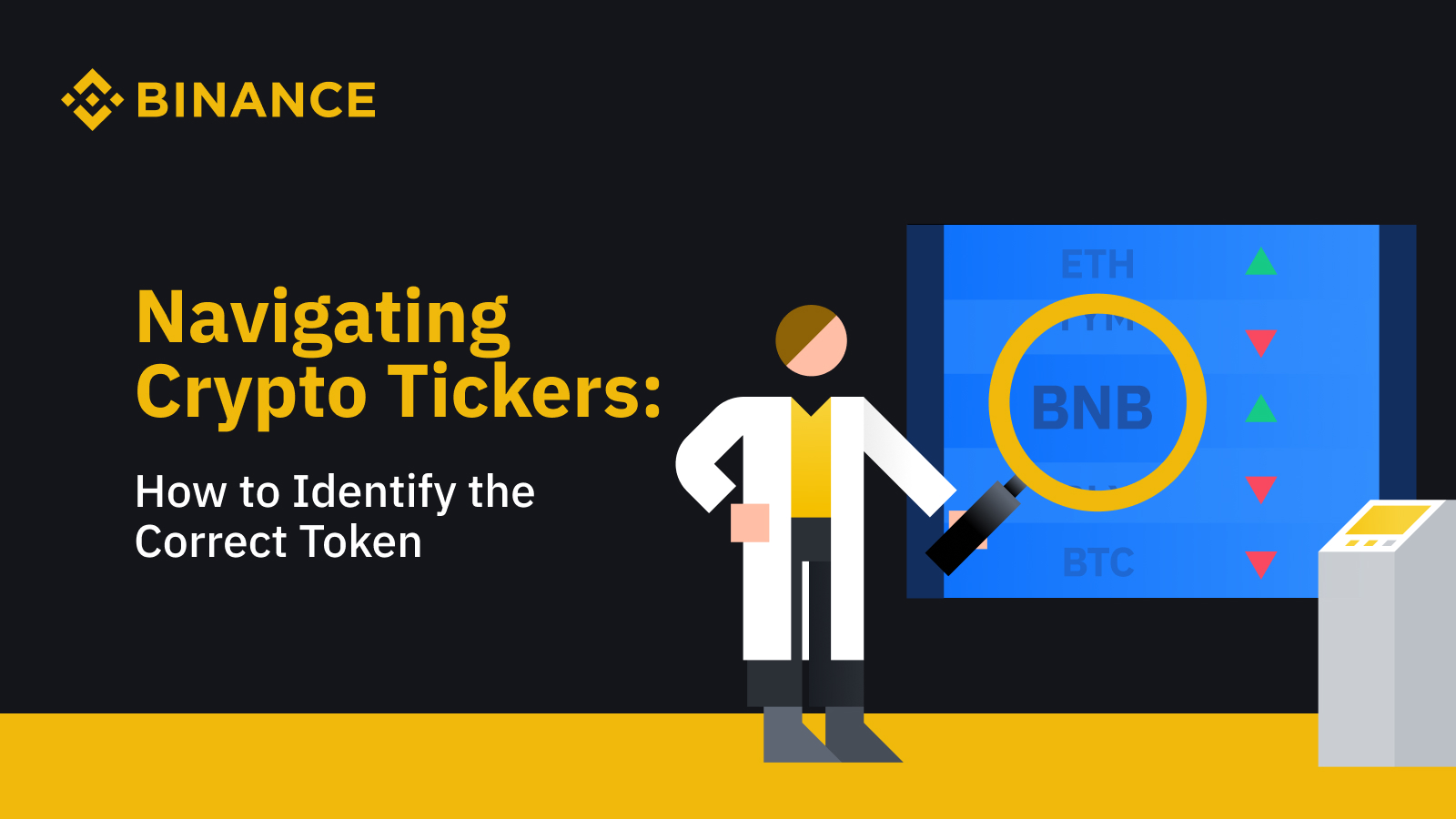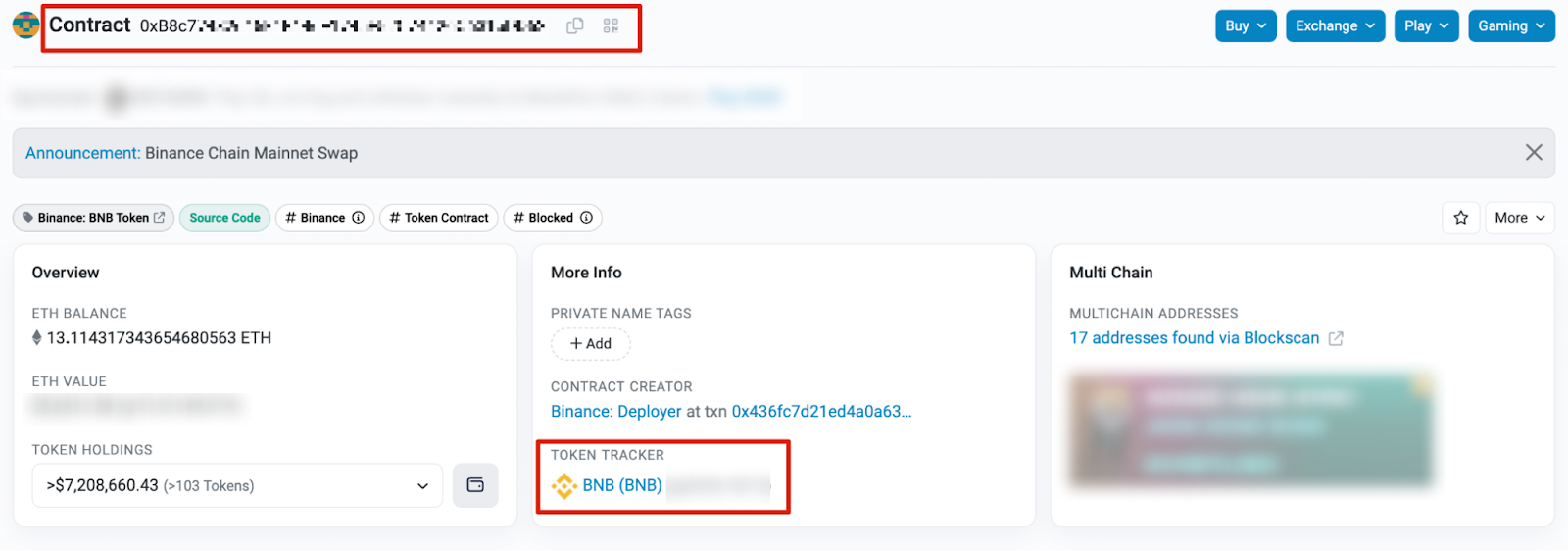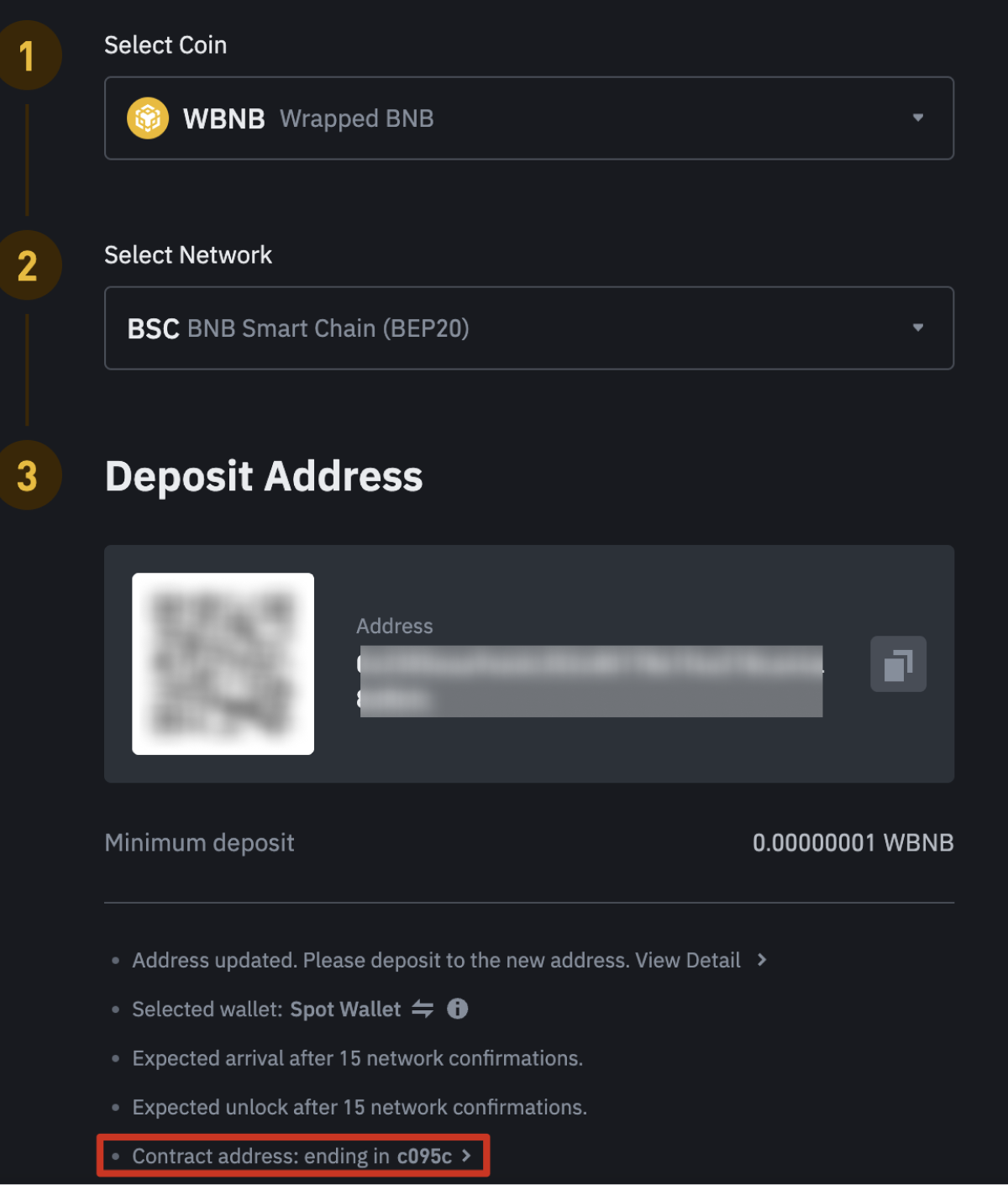Navigating Crypto Tickers: How to Identify the Correct Token
Main Takeaways
Ticker symbols are used to identify projects and are the unique combinations of letters you see all over your crypto trading apps.
Traders should exercise caution to avoid scams or ultra-low-cap projects using identical or similar tickers as legitimate projects.
Verifying the contract address and any project information of the assets you want to trade, deposit, or withdraw is crucial.
Which one’s which? Learn how to identify the correct ticker symbol in this comprehensive guide.
First introduced in the 19th century to speed up the trading process, ticker symbols are the unique combinations of letters you see all over your crypto trading apps. Familiar examples include BTC (Bitcoin), ETH (Ethereum), and BNB (Build and Build). These abbreviations play a crucial role in helping traders identify and differentiate between assets.
Unlike traditional markets, multiple projects claiming the same ticker are a common occurrence in crypto. This situation can arise due to coincidence or, in some cases, malicious intent. Traders should exercise caution to avoid scams or ultra-low-cap projects using identical or similar tickers as legitimate projects.
In this guide, we’ll explore how to accurately identify crypto ticker symbols before making trades, deposits, or withdrawals.
Always Do Your Own Research
Regardless of the type of exchange you use, verifying the contract address and any project information of the assets you want to trade is crucial. The importance of doing your own research (DYOR) cannot be overstated. It serves as a vital safeguard against falling victim to potential scams or projects with misleading ticker symbols.
Let’s explore some pointers you should keep in mind.
1. Token contract address
The contract address is a unique identifier that refers to the location of a token’s smart contract, a piece of code stored on the blockchain that executes functions, such as deposits or withdrawals, when predetermined conditions are met.
Here’s what BNB’s (ERC-20) token contract address looks like:
This information can be found on community forums, on your deposit page, or on reputable block explorers.
2. Native tokens
Note that some tokens are built directly into a blockchain. We call these tokens “native tokens.” Let’s use BNB as an example.
Suppose you deposit BNB via BNB Chain (BSC). There won’t be a contract address here because everything the token needs to function is programmed into its underlying network (BSC) instead of a separate smart contract.
Conversely, depositing BNB through a different network like Ethereum would typically require a smart contract and a token contract address.
3. Background check
Take the time to familiarize yourself with the project’s website, whitepaper, tokenomics, and social media channels. These resources offer valuable insights into the project’s goals, team members, roadmap, and legitimacy. Remember to validate the information across multiple reliable sources. Here are some red flags you should look out for:
The majority of tokens are held in a few wallets
Unclear or ambiguous whitepaper
Anonymous team with no previous track record
Poor reputation on social media (scam accusations)
Hidden source code
Before You Make a Deposit or Withdrawal
To ensure a smooth and secure transaction, take precautions such as sending a test transaction, verifying the contract address, and checking blockchain compatibility. In case you encounter issues such as an incorrect deposit or missing funds, please refer to our FAQ guides:
How to Retrieve the Deposit that Hasn’t Arrived with Self-Service Recovery
How to Retrieve Crypto Deposit with Wrong or Missing Tag/Memo
1. Send a test transaction
Transferring crypto is a more complicated user experience than traditional banking or payment systems. It’s advisable to send a small amount — one you’re comfortable with losing — to confirm the destination address before initiating a deposit or withdrawal.
2. Verify the token contract address
Similar to when trading, you should also verify the token contract address supported by the respective platforms involved before initiating a deposit or withdrawal. On Binance, you can find this information in the contract information section on your deposit page. Confirming the correct token contract address helps prevent mishaps such as sending funds to the wrong destination.
Contract information on the Binance app
Contract information on desktop version of Binance
3. Check the supporting blockchain network
The same token with identical tickers and blockchain addresses can exist across multiple networks. For example, BNB exists on both BSC and the Ethereum network. However, both versions are separate entities despite sharing the same name.
To illustrate this, suppose you send BNB via BSC to a wallet that doesn’t support BEP-20 transfers. The receiving platform may not credit your deposit and the funds may even require a recovery service.
To ensure a successful transaction, check whether the receiving platform supports the blockchain network associated with the token you intend to deposit or withdraw. Failing to consider blockchain network compatibility can result in sending tokens to the wrong address or encountering technical difficulties during the transaction process.
Tip: Binance users can visit our official Deposit and Withdrawal Status page to view the real-time status of all supported coins and networks on the Binance platform.
4. Be mindful of token bridges
If you’re utilizing a token bridge to facilitate a transfer, note that some centralized exchanges don’t support token bridge transfers. Pay closer attention to the token contract address and verify whether it’s supported on the destination platform before proceeding.
Keep in mind that sending tokens from a bridge’s smart contract can be construed as a smart contract deposit. In this instance, there’s a possibility our system (Binance) won’t credit the deposit to your account, and you’ll have to file a manual appeal.
Tip: Transfer the bridged tokens to your personal wallet before sending them as a standard blockchain transaction into the destination wallet on Binance. And remember: always send a test transaction first.
How to Identify the Correct Token Using a Block Explorer
As of May 2023, there are around 24,073 cryptocurrencies on CoinMarketCap. New projects — real, deceptive, or outright scams — are launched every week. To help you navigate the crypto space, we’ve provided a real-life example of two projects (one is legitimate, and the other is an impersonator) and explained how you could tell them apart besides the logo and name.
How to check if you’ve found the wrong “USDT”
This listing appears to be USDT at first glance. Take note of the “Overview” and “Market” sections. The numbers don’t add up: $20B total supply, 2,161 holders, $0 market cap, and no information on circulating supply.
How to check if you’ve found the correct USDT
Here is the block explorer page for the USDT that is listed on Binance. Looking closer at the numbers, we can see there are over 4M holders, 185M transfers, and $36B in total supply.
Compared to the previous examples, these numbers make sense, considering USDT is the largest stablecoin by market cap. Moreover, there’s clear information under the “Market” section regarding market cap and circulating supply.
To be precise, you should also take the extra step to conduct additional research and verify all of the above information with other reputable blockchain explorers.
A Note on BNB Chain and DeFi
Keep in mind that Binance has no control over projects built on open-source (decentralized) networks like BNB Chain . Projects on BNB Chain are community-driven, which means all governance-related decisions are made by their respective communities.
Our listing team is only in charge of vetting tokens listed on the official Binance exchange. We don’t moderate projects listed on BNB Chain-based DEXs. The benefits that come with DeFi allow anyone to deploy not only legitimate projects but also illicit tokens designed to fool investors.
Centralized or decentralized, each comes with its own pros and cons. As a general rule of thumb, you should first arm yourself with the necessary crypto knowledge before you start exploring DeFi.
Safe Trading
The next time you’re unsure about a token, make sure to follow this guide and conduct proper due diligence before you make a trade, deposit, or withdrawal. By following these steps, you can make informed decisions and steer clear of common pitfalls that could negatively impact your crypto funds.
Further Reading
Disclaimer and Risk Warning: This content is presented to you on an “as is” basis for general information and educational purposes only, without representation or warranty of any kind. It should not be construed as financial advice, nor is it intended to recommend the purchase of any specific product or service. Digital asset prices can be volatile. The value of your investment may go down or up and you may not get back the amount invested. You are solely responsible for your investment decisions and Binance is not liable for any losses you may incur. Not financial advice. For more information, see our Terms of Use and Risk Warning.





